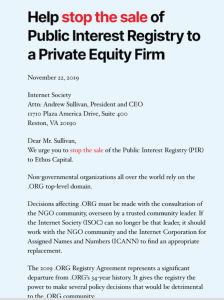Training and developing employees at nonprofits has a tendency to be problematic. Organizations have smaller budgets than most of their for-profit counterparts and employees who don’t have much extra time.
Having the time and the proper resources to train and develop your staff members might not always be feasible. Finding new and creative ways to stay connected will help.
Here are three recommendations to best approach training and development for your organization: Determine your organization’s biggest challenges; think creatively for ideas to make education impactful; and, keep your employees engaged.
1. Your Biggest Challenges
You can’t get where you want to go until you know where you have been. Start by identifying which past practices worked for your organization using a SWOT analysis. What strengths, weaknesses, opportunities, and threats do you need to consider with you’re thinking about training and development? The most common challenge nonprofit leaders find are the lack of resources and time.
If you don’t have a big budget allotted for training and development it becomes important to find cost-effective solutions:
* Set one hour aside to grab coffee with your team once a month. It doesn’t have to be a formal training, per se. You can discuss round robin topics, projects, upcoming events, etc. The point is having consistent “face-time” with leaders in your organization.
* Speed Mentoring. Get your leadership team together once every quarter or six months with the employees who sign up, and allow each employee 15 minutes with each leader. Once those 15 minutes are up, they will rotate until they have met with all leaders. This allows the employees to have access to leadership, feel a part of the organization and learn from the people who inspire them.
* Feature a Local Leader at a Get Together. Ask community leaders who have influence or ask individuals who have interesting career paths to volunteer their time to talk with your team. Make it after hours in a more relaxed environment.
If geography is a challenge, consider having your leaders meet team members halfway and perhaps take them to lunch to discuss their development goals once a quarter or twice a year.
2. Think Creatively
An employee or volunteer typically dedicates the majority of their time to carrying out the organization’s mission. Staff members and volunteers usually do not want to add more to their plate — especially if it is not convenient or they don’t see the value. How do you make it more appealing for them, while on a low budget and get better results? Here are some examples:
* Mentorship/Buddy Programs. It’s always helpful for new employees to have someone who they can reach out to with questions or concerns. This is an easy way for the person to stay connected.
* Hold a Contest. Tap into your employee’s desires for rewards. Develop a contest of some sort and offer incentives. Reward the employee who brought in the most via fundraising or reward whomever was able to bring in the most volunteers to help at an event.
* Audio Trainings. Put together a reading list of trainings that could be available on audio tapes at a local library. Take a look into apps that feature quick trainings employees can access from their phones. Webinars can also be very helpful.
3. Keeping Employees Engaged
Employee engagement is about creating a workplace where your staff members believe they have the proper tools to successfully complete their job, and where they feel encouraged to be passionate about their work. Engagement correlates to higher productivity and better client service. Driving employee engagement and development can be as simple as paying more attention to staff members. Here are a couple of ideas:
* Make your trainings and meetings interactive. You want to show your staff members that learning can be fun and add value. Interactive trainings will ensure higher retention because they are more focused. It’s also helpful to take attendance at training sessions. Staff members are the drivers of their own success.
* Potluck Lunch and Learn. Put together a potluck lunch with a training each quarter. Everyone participates by bringing a dish and you train on a topic that will be important for the next quarter.
* Collaborate. People who gravitate toward nonprofits typically enjoy a challenge. Ask for their feedback and help on finding solutions, whether that be around training and development, or how they could be doing their jobs better.
Another form of engagement that requires a little bit more time is bi-weekly individual calls with each person on the team, in addition to a weekly team meeting. It might take a couple of hours off your calendar, but in the long run your team will be more productive, add more value and accomplish its goals.
There are many ways you can approach the world of training and development. Applying ideas creatively should allow you to jump-start conversations and take that next step in propelling the organization’s future workforce.
***
Samantha Allison is a Human Resources Consultant at Helios HR in Washington, D.C. Her email is [email protected]










